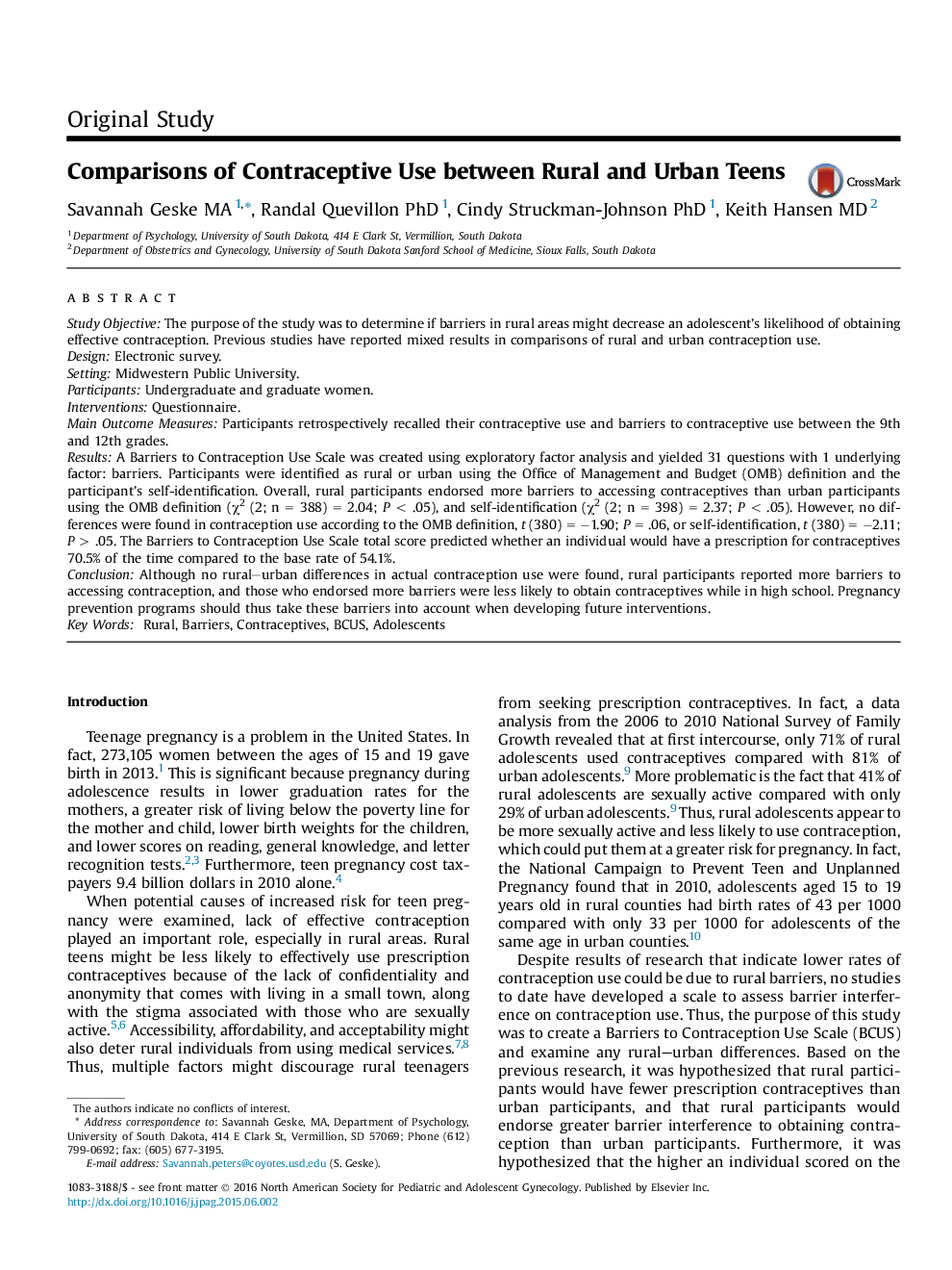| کد مقاله | کد نشریه | سال انتشار | مقاله انگلیسی | نسخه تمام متن |
|---|---|---|---|---|
| 3961319 | 1255596 | 2016 | 9 صفحه PDF | دانلود رایگان |
Study ObjectiveThe purpose of the study was to determine if barriers in rural areas might decrease an adolescent’s likelihood of obtaining effective contraception. Previous studies have reported mixed results in comparisons of rural and urban contraception use.DesignElectronic survey.SettingMidwestern Public University.ParticipantsUndergraduate and graduate women.InterventionsQuestionnaire.Main Outcome MeasuresParticipants retrospectively recalled their contraceptive use and barriers to contraceptive use between the 9th and 12th grades.ResultsA Barriers to Contraception Use Scale was created using exploratory factor analysis and yielded 31 questions with 1 underlying factor: barriers. Participants were identified as rural or urban using the Office of Management and Budget (OMB) definition and the participant’s self-identification. Overall, rural participants endorsed more barriers to accessing contraceptives than urban participants using the OMB definition (χ2 (2; n = 388) = 2.04; P < .05), and self-identification (χ2 (2; n = 398) = 2.37; P < .05). However, no differences were found in contraception use according to the OMB definition, t (380) = −1.90; P = .06, or self-identification, t (380) = −2.11; P > .05. The Barriers to Contraception Use Scale total score predicted whether an individual would have a prescription for contraceptives 70.5% of the time compared to the base rate of 54.1%.ConclusionAlthough no rural–urban differences in actual contraception use were found, rural participants reported more barriers to accessing contraception, and those who endorsed more barriers were less likely to obtain contraceptives while in high school. Pregnancy prevention programs should thus take these barriers into account when developing future interventions.
Journal: Journal of Pediatric and Adolescent Gynecology - Volume 29, Issue 1, February 2016, Pages 33–41
